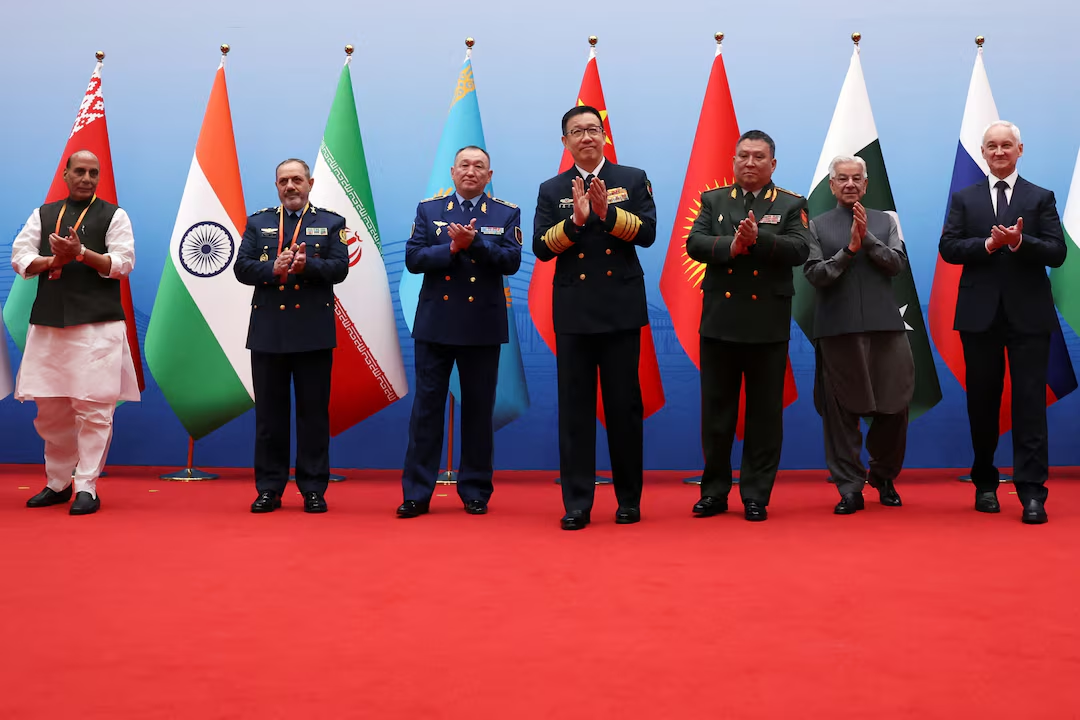- Courses
- GS Full Course 1 Year
- GS Full Course 2 Year
- GS Full Course 3 Year
- GS Full Course Till Selection
- Answer Alpha: Mains 2025 Mentorship
- MEP (Mains Enrichment Programme) Data, Facts
- Essay Target – 150+ Marks
- Online Program
- GS Recorded Course
- Polity
- Geography
- Economy
- Ancient, Medieval and Art & Culture AMAC
- Modern India, Post Independence & World History
- Environment
- Governance
- Science & Technology
- International Relations and Internal Security
- Disaster Management
- Ethics
- NCERT Current Affairs
- Indian Society and Social Issue
- NCERT- Science and Technology
- NCERT - Geography
- NCERT - Ancient History
- NCERT- World History
- NCERT Modern History
- CSAT
- 5 LAYERED ARJUNA Mentorship
- Public Administration Optional
- ABOUT US
- OUR TOPPERS
- TEST SERIES
- FREE STUDY MATERIAL
- VIDEOS
- CONTACT US
NEW TREATY FOR OUTER SPACE
NEW TREATY FOR OUTER SPACE
07-06-2023

Latest Context
In a recent policy brief titled "For All Humanity — The Future of Outer Space Governance," the United Nations (UN) suggested the creation of a new treaty to guarantee peace, security, and the avoidance of an arms race in space.
- The suggestions coincide with the impending UN Summit of the Future, which is slated to take place in New York in September 2024. In order to address upcoming difficulties, the summit intends to enable multilateral solutions and enhance global governance.
Key Highlights of the new Treaty
Rising Satellite Launches:
- Over the past ten years, satellite launches have grown exponentially as a result of involvement from both the public and private sectors.
- The number of new launches climbed from 210 in 2013 to 600 in 2019, 1,200 in 2020, and 2,470 in 2022.
- Leading countries in space operations, including as manned missions, lunar exploration, and resource exploitation, include the United States, China, India, and Japan.
- The National Aeronautics and Space Administration (NASA) aims to send the first woman and the next man to the Moon with its Artemis mission.
- Minerals on the Moon (which has vast reserves of helium 3, which is rare on Earth), asteroids (which have large concentrations of priceless metals, including as platinum, nickel, and cobalt), and planets can be attractive to nations.
Lack of a global Framework:
- On the exploration, exploitation, and use of space resources, there is no established international framework.
- In addition to addressing questions of jurisdiction, control, accountability, and responsibility for environmental damage, the brief emphasises the significance of setting up structures to facilitate the execution of space resource operations.
Coordination and Traffic Management in Space:
- With several national and regional organisations using different standards and practises, the coordination of space traffic is currently fragmented.
- Countries with limited space capabilities face difficulties as a result of the lack of cooperation.
Environmental issues and Space Debris:
- Various objects that pose risks to operational spacecraft are part of the important issue of the spread of space debris.
- The UN demands legal analysis of jurisdiction, control, accountability, and responsibility for space debris's impact on the environment. Technology to clear space debris is being developed, but legal considerations must be made.
Recommendations of the New Treaty
Peace and Security for New Treaty:
- To maintain peace, security, and the avoidance of an arms race in space, the UN recommends that a new convention be negotiated and developed.
- With the help of this treaty, responsible space operations would be encouraged and new concerns would be addressed.
Situational Awareness in Coordinated Space:
- The establishment of an efficient framework for coordinating space situational awareness, space object manoeuvres, and space events is encouraged by member states. The safety and security of space activities will be improved by this collaboration.
Framework for Space Debris Removal:
- The UN requests that standards and guidelines for removing space debris be developed while taking into account legal and scientific considerations.
- It is advised to develop an efficient framework for the exploration, exploitation, and use of space resources, particularly those found on the Moon and other celestial bodies.
Facts about Outer Space
- The vast area between celestial bodies and outside the Earth's atmosphere is referred to as outer space, sometimes known as space or celestial space. Beyond the atmosphere of the Earth, and across the entirety of the cosmos, lies a vacuum. Extremely low pressure and density, as well as the lack of air and other atmospheric components, are characteristics of outer space.
UN Treaties:
-
The "five United Nations treaties on outer space" are:
- Rescue Agreement 1968: Agreement on Astronaut Rescue, Astronaut Return, and the Return of Launched Objects to Space.
- Moon Agreement 1979: Agreement Regulating States' Activities on the Moon and Other Celestial Bodies.
- Liability Convention 1972: Convention on International Liability for Damage Caused by Space Objects.
- Registration Convention 1976: Convention on Registration of Objects Launched into Outer Space.
- Outer Space Treaty 1967: Treaty on Principles Governing International Space Activities, including the Exploration and Use of the Moon and Other Celestial Bodies.
- India has ratified just four of these five accords, although being a signatory to all five. India refused to ratify the Moon accord.

Q. International civil aviation laws provide all countries complete and exclusive sovereignty over the airspace above their territory. What do you understand by ‘airspace’? What are the implications of these laws on the space above this airspace? Discuss the challenges which this poses and suggest ways to contain the threat. (2014)



